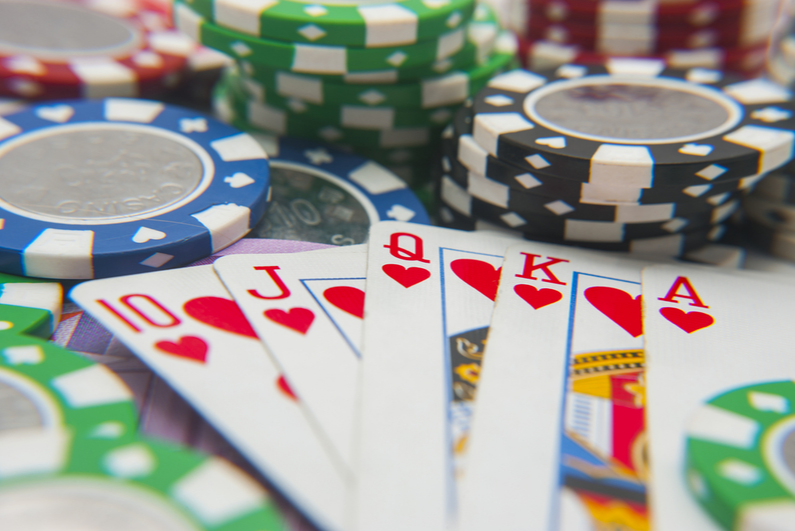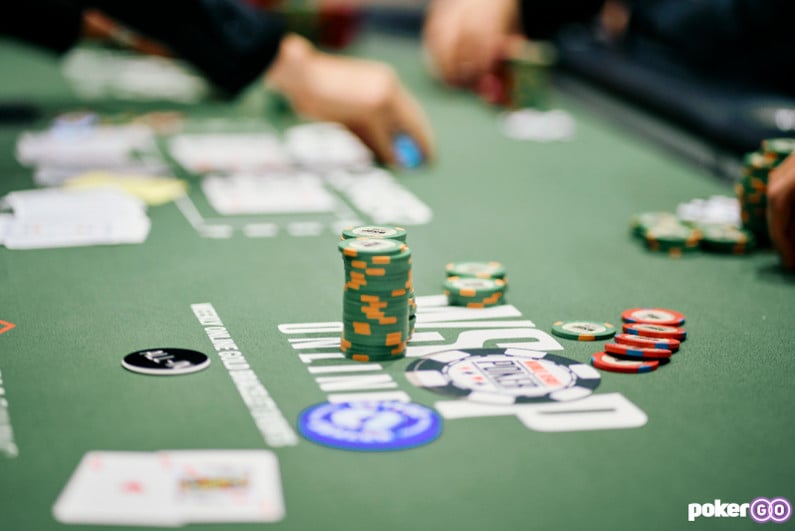A new way of playing
For many people, learning game theory optimal (GTO) and using solvers is a mind-blowing experience. They have played poker one way for a long time then are suddenly presented with a new, counterintuitive way of playing. This can result in resistance, especially if the player in question has had success with an exploitative style previously.
the lessons eventually became heuristic about how to play
For me, discovering solver technology was more a case of confirming the suspicions I had developed over several years as a professional poker player. I learned poker the way everyone did back in the day, which was trial and error. I would see what worked and what didn’t, and the lessons eventually became heuristic about how to play.
First discovering GTO
The first inkling I had that game theory could be applied to poker was after I read Harrington On Hold’em. There was a sentence that really jumped out to me where Dan Harrington talked about shoving as a bluff. He said that if you add 33% to your stack when the shove gets through, and if you have 33% equity on average when called, you only need the shove to work 33% of the time to be profitable. I looked at that sentence and realized that you can work out which hands are profitable to shove.
I worked with an equity calculator and a spreadsheet, and created push/fold ranges using trial and error. It took six months and was rendered completely useless when ICMIZER came out.
the regulars started to notice I was pushing wider than I used to
I studied this sheet when I was a Sit and Go grinder and it worked out really well for a while, but then the regulars started to notice I was pushing wider than I used to, so they adjusted by widening their calling ranges against me. I returned to the spreadsheet, fiddled with the ranges, and created a tighter, adjusted shoving range based on their new calling ranges. They adjusted again by tightening up against me, so I adjusted by widening my ranges again.
A few more iterations followed and I had the eureka moment where I realized we were coming to an equilibrium, which meant that we were going to arrive at a place where neither of us would deviate from our own strategy despite knowing each other’s ranges. Soon it would be a case of if I shoved wider I would lose money, if they called wider they would lose money, and so on.
This sent me down a rabbit hole where I started to learn about game theory and how it applied to poker.
Applying the theory
Around this time I was crushing the live poker scene in Ireland alongside Dermot Blain and Jason Tompkins. For a few years, there wasn’t a decent final table one or more of us wasn’t present. In some cases, a couple of us were at the same final table. The three of us had such an edge, we estimate we all had a live return on investment of 300%.
It was only when I started playing abroad at European Poker Tour (EPT) events that I came up against players I had no idea how to play against. They were so much better than me. I could not get any reads on them at all or work out how to exploit them. I thought I could not compete against them, but I remembered the basic precept of game theory was to develop an unexploitable style. It doesn’t matter what they do, if you are unexploitable they cannot beat you.
the first time I faced an overbet in my career
I think the most important hand I’ve ever played in terms of my career happened during this period at EPT Berlin against online legend Randy ‘Nanonoko’ Lew. It folded around to me in the cutoff and I open with A8o. Nanonoko calls the Big Blind; he covers me. The flop came 8-3-2 and he led really small, I thought “this is easy” and just called. The turn was a 6 and he led small, so I called again. The river was a Q and he then bet three times the pot. I thought “what the f**k?” This wasn’t supposed to happen, he was supposed to check and then I would think about betting, or he would bet small and I would call again. Where did this come from? This might have been the first time I faced an overbet in my career.
In my mind I thought he was at it. He knows I have a weak hand and he is betting to take me off it, so I have to call because he is full of s**t. But then I thought he was looking at some old guy he had never seen before and we can’t fold anything. He knows I have a pair and he bet big to get max value. These two conflicting thoughts were going through my mind. He knows my hand and he is trying to take me off it, or he knows my hand and he is trying to get max value. I ended up folding.
Lessons from Nanonoko
I asked all the top players I knew what they would have done in the face of Nanonoko’s overbet, half of them said “it’s Nanonoko, he is full of s**t, you have to call,” and the other half said “you can’t even think about calling; it’s three times the pot.” It came down to what people thought of Nano, not the hand.
That started me thinking; what do we do in this scenario? I knew we can’t always call and we can’t always fold, because we would be exploited either way. So that got me thinking about game theory and I started going back to first principles. He bet three times the pot, so if we fold four-fifths of the time he is going to win one unit four times and lose three units one time if he’s bluffing. Therefore I have to call 25% of the time (otherwise he can profitably shove as a bluff always), so I had to decide what hands I call with, as well as whether blockers came into play.
From that point on, I realized that elite poker was all about game theory. I continued with exploits against weak players, but for the other guys, I fixated on studying how to be unexploitable. I had to learn concepts like the types of ranges, board coverage, minimum defense frequency, blockers, and much more.
Then came solvers
When the solvers arrived, I was already there. I was a very early adopter of solver technology. When Holdem Resources Calculator came out, I didn’t need my spreadsheet anymore. When PIOSolver came out, it just confirmed everything I had suspected from studying GTO.
This is not to say I didn’t learn from solvers. They have revolutionized my game and I continue to be amazed at some of the things I learn on a daily basis with them. They even gave me a framework for why my exploits worked, in particular when thinking about ranges and blockers.
With no reads and no stats, poker is all about game theory
It is no coincidence that the efforts by a lot of online poker rooms to ban heads-up displays (HUDs) have coincided with the growth of solver technology. HUDs are all about exploitative poker as they show you the tendencies of your opponents. With no reads and no stats, poker is all about game theory. A good regular has to play a lot of tables to be profitable and you cannot pay attention to 12 tables at a time without a HUD, so the correct approach is to play as close to a GTO style as possible.
GTO is the starting point for all good training content these days, even if that content then goes on to be mostly about exploits. GTO should be your starting point for playing against unknown players and very good players.




